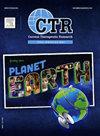Relationship Between Dietary Acid Load and Risk of Metastatic Colorectal Cancer: A Case-Control Study
IF 1.5
Q3 MEDICINE, RESEARCH & EXPERIMENTAL
Current Therapeutic Research-clinical and Experimental
Pub Date : 2025-01-01
DOI:10.1016/j.curtheres.2025.100790
引用次数: 0
Abstract
Purpose
Colorectal cancer (CRC) is a type of cancer affecting the colon and rectum, primarily originating from intestinal polyps. Recently, increasing attention has been given to the role of dietary acid-base balance in cancer development. This study aimed to investigate the relationship between dietary acid load and the risk of metastatic colorectal cancer (mCRC).
Design/methodology/approach
This hospital-based case-control study was conducted on 120 adults with mCRC and 240 non-neoplastic adults in the control group, matched for age and gender. Dietary intake was assessed using a food frequency questionnaire. Net endogenous acid production (NEAP) and potential renal acid load (PRAL) were calculated using predetermined formulas. Odds ratios (ORs) were used to estimate the risk of mCRC across PRAL and NEAP tertiles.
Findings
There were no significant differences between the two groups in terms of demographic characteristics, anthropometric measures, smoking, and alcohol consumption. However, energy intake and energy-adjusted carbohydrate, fiber, potassium, magnesium, and calcium intake were significantly higher in the control group compared to the case group (P < 0.05). The mean PRAL in the case group (10.5 ± 1 mEq/day) was significantly higher than in the control group (5.2 ± 0.5 mEq/day) (P < 0.001). However, no significant difference was observed between the groups regarding NEAP (35 ± 7 mEq/day in the control group vs. 36 ± 5.5 mEq/day in the case group, P = 0.12). The second and third tertiles of PRAL were associated with an increased risk of mCRC compared to the first tertile (OR = 3.4, 95% CI: 1.6–7; OR = 4.1, 95% CI: 2–8.5, respectively) (P < 0.001).
Originality/value
High PRAL levels were associated with an increased risk of mCRC, whereas NEAP scores were not linked to mCRC risk.
膳食酸负荷与转移性结直肠癌风险的关系:一项病例对照研究
目的结肠直肠癌(CRC)是一种影响结肠和直肠的癌症,主要起源于肠息肉。近年来,人们越来越关注饮食酸碱平衡在癌症发展中的作用。本研究旨在探讨膳食酸负荷与转移性结直肠癌(mCRC)风险之间的关系。设计/方法/方法:这项以医院为基础的病例对照研究对年龄和性别匹配的120名成年mCRC患者和240名非肿瘤性成人进行了研究。使用食物频率问卷评估饮食摄入量。净内源性产酸量(NEAP)和潜在肾酸负荷(PRAL)采用预定公式计算。比值比(ORs)用于估计PRAL和NEAP两组患者发生mCRC的风险。研究结果:两组在人口统计学特征、人体测量、吸烟和饮酒方面没有显著差异。然而,与病例组相比,对照组的能量摄入量和能量调节碳水化合物、纤维、钾、镁和钙的摄入量显著高于病例组(P <;0.05)。病例组平均PRAL(10.5±1 mEq/d)显著高于对照组(5.2±0.5 mEq/d) (P <;0.001)。然而,在NEAP方面,两组之间没有显著差异(对照组为35±7 mEq/天,病例组为36±5.5 mEq/天,P = 0.12)。与第一分位数相比,PRAL的第二和第三分位数与mCRC的风险增加相关(OR = 3.4,95% CI: 1.6-7;OR = 4.1,95% CI分别为2-8.5)(P <;0.001)。原创性/价值高PRAL水平与mCRC风险增加有关,而NEAP评分与mCRC风险无关。
本文章由计算机程序翻译,如有差异,请以英文原文为准。
求助全文
约1分钟内获得全文
求助全文
来源期刊
CiteScore
3.50
自引率
0.00%
发文量
31
审稿时长
3 months
期刊介绍:
We also encourage the submission of manuscripts presenting preclinical and very preliminary research that may stimulate further investigation of potentially relevant findings, as well as in-depth review articles on specific therapies or disease states, and applied health delivery or pharmacoeconomics.
CTR encourages and supports the submission of manuscripts describing:
• Interventions designed to understand or improve human health, disease treatment or disease prevention;
• Studies that focus on problems that are uncommon in resource-rich countries;
• Research that is "under-published" because of limited access to monetary resources such as English language support and Open Access fees (CTR offers deeply discounted English language editing);
• Republication of articles previously published in non-English journals (eg, evidence-based guidelines) which could be useful if translated into English;
• Preclinical and clinical product development studies that are not pursued for further investigation based upon early phase results.

 求助内容:
求助内容: 应助结果提醒方式:
应助结果提醒方式:


